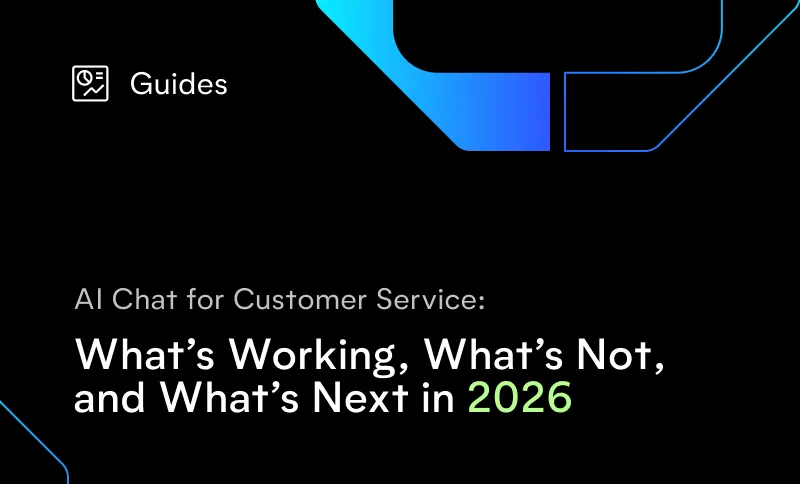
Cultures all over the world celebrate Valentine’s Day in their own unique ways. In Italy, couples cover walls in padlocks. In Wales, wooden spoons are exchanged as symbols of engagement.
Meanwhile, in contact centers, leaders strategize how they can make their customers fall even more in love with them. (We said unique, didn’t we?).
In 2023, a strong CX strategy is more important than ever: staffing shortages aren’t going anywhere, call volumes are more unpredictable than before, and customer expectations are on the rise.
Contact center leaders are under immense pressure to think outside the box and transform how their customers get support. Not just today, but for every Valentine’s season to come.
Here are six reasons you should start by taking a good look at your relationship with your IVR system – and why it might be time for a breakup.
1. Communication is key
As in any relationship, communication is key during a machine-to-human interaction. Unfortunately, most IVRs struggle with listening. 56% of consumers cite automated telephone systems as the most frustrating aspect of poor customer service. That’s because IVRs usually lead to customers feeling misunderstood, requests needing to be repeated, and keywords being missed due to accents, background noise, or unique speech patterns.
The Replicant Difference: Replicant’s Thinking Machine can both replace your IVR, and completely resolve customer requests with the most natural human-to-machine conversations ever created. It features a less-than-1 second latency between conversation turns and uses advanced AI models to accurately understand customer intents over 94% of the time, without relying on keywords.
2. It’s complicated
A healthy customer-to-brand relationship should feel simple and effortless. But IVRs almost always lead to unnecessary complexity. The most common misstep customers experience are IVRs with far too many menu options, which leave them lost by the fifth item. This can lead callers to spam the ‘zero’ button to reach an agent for an issue that likely could have been automated from the start. A better option is Contact Center Automation which allows customers to simply respond to “how can I help you?” in their own words.
The Replicant Difference: Replicant’s Thinking Machine boasts multi-intent recognition, that doesn’t restrict customers to asking just one question at a time in one specific way. Replicant Powers give contact centers out-of-the-box components to scale conversations fast. This includes access to an extensive library of pre-built conversation components that already incorporate conversational design best practices and cover a variety of use-cases, so conversations are simple, straightforward, and effective.
3. Relationships are a two-way street
IVRs aim to assist agents by cutting down on the number of transfers that need to take place in a given interaction. They also attempt to route customers to self-service options, preventing an agent from ever having to step in. But they aren’t intended to truly serve the customer within the interaction itself. This is the number one reason customers have an overall negative perception of IVRs, viewing them as a waste of time rather than a helpful tool.
The Replicant Difference: Replicant knows that, above all, benefiting the customer benefits the brand. That’s why our contact center automation solution was crafted to completely resolve tier-1 customer requests. When automation isn't suitable for a request, customers are intelligently transferred to an agent with a full summary of the request and all the necessary information to make the agent’s job easier.
4. Personal time is important
Technology in the contact center should hinge on one truth: connect customers to answers. IVRs too often serve as barriers to connection rather than bridges. And when agents spend the majority of their days addressing simple, monotonous calls, they’re prevented from conversations that require creativity and empathy. They also have less time to improve their own skills, take a break, or address their other responsibilities.
The Replicant Difference: By automating all tier-1 calls, Replicant’s Thinking Machine is an agent’s best friend. It’s infinitely scalable, and available 24/7, which means agents can forget about the monotonous conversations and focus on connecting with customers in need, creatively solving problems, and upskilling their certifications.
5. Abandonment is too common
CallCentreHelper found that up to 81% of customers abandoned a call due to an IVR. Moreover, IVR metrics usually oversimplify conversations into the categories of containment, abandonment, or escalation. Today’s contact centers must strive to get more out of their systems. A frustrated customer who hangs up before getting their issue resolved can lead to massive losses for your brand, and the data behind why calls are abandoned must be accessible.
The Replicant Difference: With Replicant, contact center leaders get visibility into all customer support conversations through an end-to-end dashboard. Contact center managers can monitor conversations, analyze insights from conversation data, and take action immediately by updating conversation scripts to create an optimal customer experience.



.svg)


